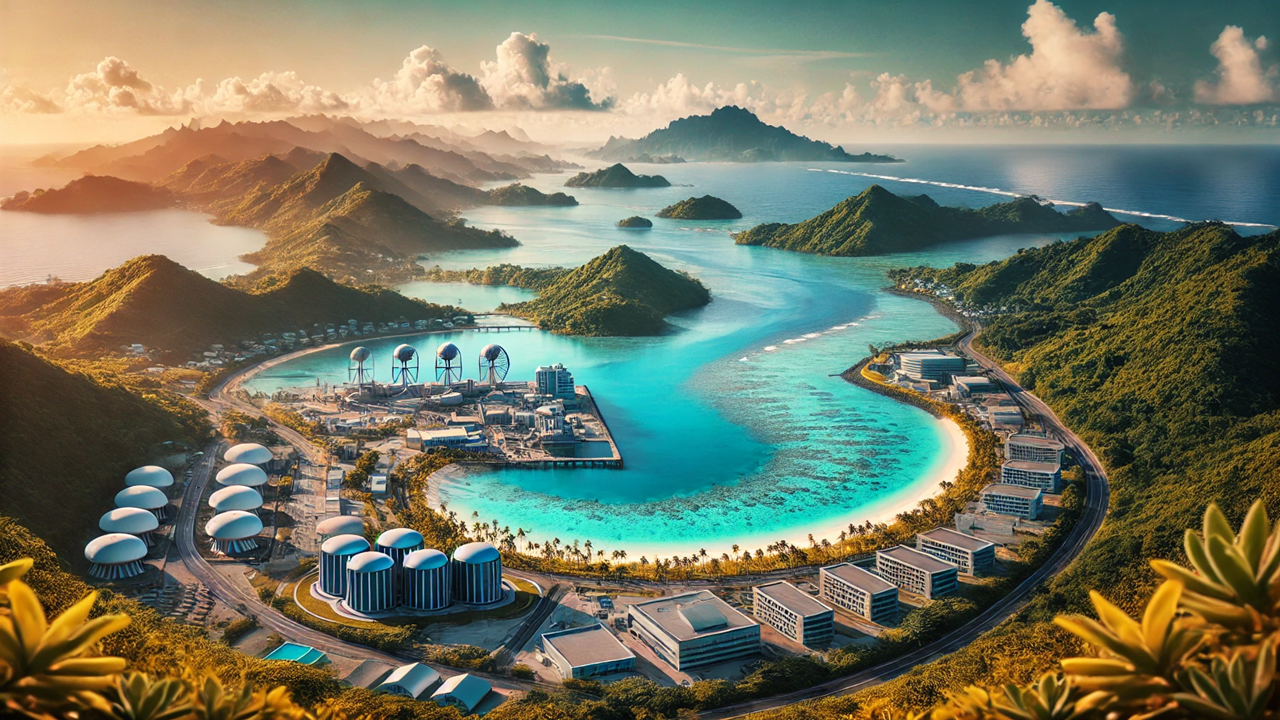Pacific Economic Update: Strategies for Sustainable Growth Amid Global Uncertainty
The World Bank's latest Pacific Economic Update reveals a critical outlook for the economies of the Pacific Islands. Highlighting slow growth and inflation drops, the report underscores the urgent need for investment, climate resilience, and fiscal reform to foster sustainable development. Key sectors like tourism, agriculture, and infrastructure play pivotal roles in driving resilience and future prosperity for these island economies.

Pacific Economic Update Highlights Key Investment Needs for Sustainable Growth
In its latest edition, the World Bank’s Pacific Economic Update, October 2024 delivers a comprehensive look at the economic landscape of the Pacific Island nations, unveiling a crucial message: growth is slowing, and the region urgently needs new investments and policy shifts to maintain momentum. Covering the economies of 11 Pacific Island countries (known as the PIC-11), the report outlines a path forward to address the unique economic pressures facing these nations, including the aftermath of the pandemic, high operational costs, and vulnerabilities to natural disasters.
Declining Growth and Inflation Stabilization
The report reveals that after a strong recovery in 2023, growth among the PIC-11 is now moderating, dipping to an estimated 3.6% in 2024 from 5.8% the previous year. A return to pre-pandemic levels is setting a slower pace across the board, with Fiji and the Solomon Islands—two of the region’s largest economies—particularly affected. Although inflation has eased significantly, down to an average of 4% from 6.8% in 2023, many households are still grappling with the lasting impact of price surges in recent years. For these island economies, which depend heavily on imports, managing inflation remains critical to ensure that cost-of-living pressures don’t undercut their development efforts.
Tourism and Remittances Drive Growth, But Challenges Persist
The report highlights that while recovery in tourism and remittances has been uneven, countries like Samoa, Palau, and Tonga have seen substantial gains. Tourism, a lifeline for many island economies, is picking up but still faces hurdles due to outdated infrastructure and concentrated tourism activity in select areas. The influx of remittances from Pacific nationals working abroad has been a stabilizing force, providing much-needed financial inflows that sustain local spending and economic resilience.
However, the World Bank warns that without addressing the infrastructural gaps and enhancing these sectors, the gains from tourism and remittances may be short-lived. Developing sustainable tourism practices, improving rural connectivity, and adapting tourism incentives to market trends are critical steps forward.
Investment and Infrastructure: Key Hurdles to Long-Term Stability
Investment growth in the Pacific has remained below expectations and is projected to stagnate throughout the 2020s unless new measures are implemented. Challenges like limited fiscal reserves, high operational costs, and outdated energy and digital infrastructure constrain these economies, making it difficult for them to compete globally or attract significant investment.
The report underscores that high investment volatility—partially driven by the region’s vulnerability to frequent natural disasters—creates a cycle of “rebuild and recover” that stifles long-term capital accumulation. Infrastructure improvements, particularly in road networks, port facilities, and internet access, are essential. By enhancing these foundational elements, the Pacific can reduce operational costs for businesses, improve trade logistics, and attract private sector investments that are crucial for future growth.
Structural and Fiscal Pressures Require Policy Overhaul
Fiscal pressures vary across the Pacific, with some economies implementing tax reforms and others facing fiscal instability due to limited diversification and heavy reliance on external aid. To create a buffer against global economic fluctuations, the report suggests that Pacific governments expand their tax base and manage public debt more sustainably.
The update emphasizes the importance of strengthening fiscal buffers to weather future economic storms. This includes implementing progressive tax policies, managing debt, and mobilizing domestic revenue sources. Such efforts are essential to create a more resilient fiscal foundation that supports essential investments in public services, education, and infrastructure.
Recommendations for Building Resilience and Future Growth
The World Bank’s Pacific Economic Update presents clear recommendations to help the PIC-11 foster a supportive investment environment:
Enable sectoral investments: By prioritizing high-potential sectors such as agriculture, sustainable tourism, and the blue economy, these island economies can drive both growth and resilience. Expanding sustainable fishing and aquaculture initiatives are also highlighted as significant opportunities.
Address infrastructure gaps: Transportation, port, and energy infrastructure improvements are necessary for regional competitiveness. Investing in renewable energy sources and enhancing digital connectivity can reduce dependency on costly imports and position the region as a player in the global economy.
Climate resilience initiatives: Investing in disaster-resistant infrastructure and early warning systems is essential for these vulnerable island nations. Such steps can mitigate the economic shocks of natural disasters and protect both public and private investments.
Strengthen fiscal stability: Expanding tax bases, reducing dependency on foreign aid, and responsibly managing debt are critical for building a sustainable financial environment that can withstand future economic disruptions.
Looking Ahead
The Pacific Economic Update, October 2024 emphasizes that, while the Pacific Islands face significant economic headwinds, targeted investments in infrastructure, policy reforms, and climate resilience can drive sustainable growth. By addressing these challenges with a people-first approach, these nations can foster long-term prosperity and stability for their populations. The report underscores a clear message: proactive investments and policy measures are critical to turning economic vulnerability into resilience for the PIC-11 in the years to come.
This forward-looking blueprint from the World Bank provides a roadmap not only for these island nations but also for investors and international partners committed to the region’s sustainable development.
- FIRST PUBLISHED IN:
- Devdiscourse
ALSO READ
India's Labour Codes: A Catalyst for Economic Growth and Efficient Logistics
ECB Holds Steady: Inflation Goals Reaffirmed Amid Economic Growth
Madhya Pradesh Paves Pathway to Economic Growth with Mega Road Projects
Financial Strategies and Expansions: A Deep Dive into Asset Management and Economic Growth
RBI's Strategic Rate Cut: Navigating Inflation and Economic Growth










